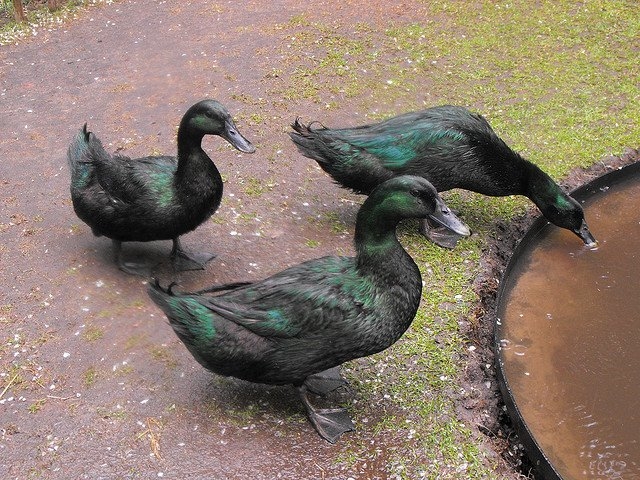

Here’s everything in detail, to help you differentiate Khaki Campbell drakes from the Khaki Campbell hens. You can’t exactly base it on their reproductive organs as their inside their body! But, between male and female Khaki Campbell ducks, you will observe a clear difference in size, plumage color, tail feathers, bills, and feet.Īnother useful difference you can use in your investigation is listening to their quacks, and observing mating or egg-laying behavior. Luckily, when it comes to Khaki Campbell ducks, there are a few key physical differences that you can use to determine whether it’s a male or female. Take silkie roosters and hens for example – up until maturity they just look so similar! With some breeds of poultry, trying to determine whether you’ve got a male or female can be somewhat of a challenge.

The Cayuga is recognized as one of the hardiest of the domestic ducks and are easily tamed if hand raised. They tend to choose seasonal rather than life mates. Eggs are initially black in color, but as the season progresses, egg color lightens to gray and eventually they become white. They become broody after they have laid 8-14 eggs, and they may become aggressive when they are sitting. They may be butchered as early as 8 weeks, but many suggest the best results come with waiting until 12 weeks.Ĭayuga ducks can lay 100-150 large eggs per year that can be used for general eating and baking purposes. Some feel the meat has a flavor similar to that of prime beef. Some resolve this problem by skinning the ducks rather than plucking. The meat of the Cayuga is reputed to be of excellent taste, tender, and of fine quality, but the carcass can be difficult to clean because of their dark feathering. and can obtain most of its diet from foraging when given appropriate areas to explore for food. Their bill is black but may change to olive. They are upright breed with brown eyes, and black legs, and feet that may be tinged in orange in drakes as they mature. The stiff, hard plumage of the Cayuga is black with an iridescent green/blue/purple sheen in the sunlight they may develop white mottling as they age. Their feet have straight toes with webbing. They have a broad, full, and prominent breast with a deep, long, and broad body and large, short thighs. Their medium length neck is slightly arched. They have a long head, and their bill is slightly flattened along the top line. They are similar to an Aylesbury duck in shape and size. The Cayuga is a medium-sized, heavy breed. The breed was raised in large numbers on duck farms in New York until the 1890s when the Pekin duck came to dominate the duckling market in big cities. By 1874, the Cayuga duck was accepted into the American Poultry Association’s Standard of Perfection. The ducks were named “Cayuga” after the native people of that area. This is further substantiated by Luther Tucker, editor of The Cultivator, in 1851. He noted at the time that occasionally ducks would develop a “top knot” on their heads. Clark introduced ducks he obtained in Orange County, New York to Cayuga County in the Finger Lakes region of New York circa 1840. The hunter, having vast knowledge of the local wild ducks, supported the theory that the Cayuga was derived from the Black duck of Lancashire as opposed to originating from a local wild duck population. Teebay’s view on the Cayuga’s origin was supported by an unnamed acquaintance who extensively hunted and trapped in the region and was familiar with both domestic breeds. He notes that the English black duck had since disappeared in Lancashire, replaced by the popular Aylesbury duck in the 1880s.

He believed Cayugas may have originated from this stock. Teebay states that the Cayuga resembles, or was identical to, an English black duck breed common in Lancashire in the 1860s. Teebay of Fulwood, Lancashire, UK in Lewis Wright’s 1885 publication The Book of Poultry. Another story of the creation of the Cayuga duck breed is told by Mr.


 0 kommentar(er)
0 kommentar(er)
